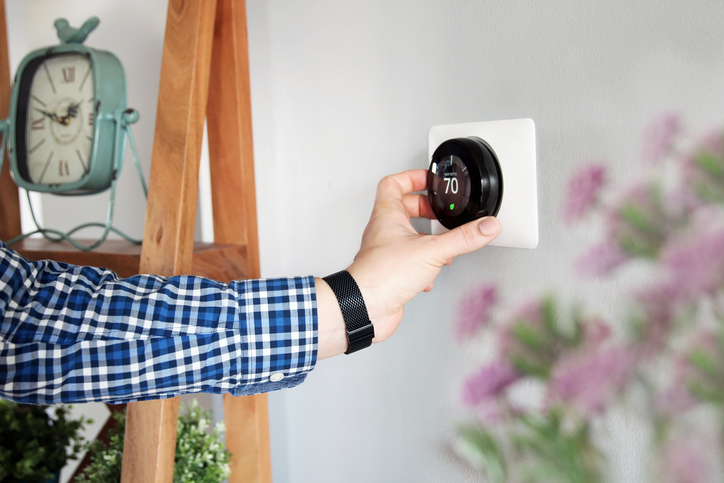
Preparing Your Air Conditioner for Arizona’s Summer
Summer is fast approaching, and with it comes the intense heat that can make indoor spaces unbearable without a properly functioning air conditioner. The key to a cool and comfortable home is preparing your air conditioner for summer before temperatures soar. A well-maintained AC system runs efficiently, saves energy, reduces utility costs, and prevents unexpected breakdowns.
This in-depth guide will walk you through every step of the preparation process, from safety measures to professional maintenance tips.
Why Preparing Your Air Conditioner for Summer Is Essential?
Many homeowners neglect AC maintenance until they experience issues like weak airflow, high energy bills, or system breakdowns. However, proactive maintenance offers several benefits:
- Increased Energy Efficiency: A clean, well-functioning system cools your home faster with less energy.
- Longer System Lifespan: Routine maintenance prevents significant issues that can shorten your AC’s life.
- Lower Utility Bills: An efficient unit uses less energy, reducing electricity costs.
- Consistent Cooling Performance: Ensures even cooling throughout your home.
- Fewer Emergency Repairs: Prevents costly breakdowns during peak summer heat.
By preparing your air conditioner for summer, you’ll enjoy reliable cooling when you need it most.
Step 1: Safety First – Turn Off Power Before Maintenance
Before performing any maintenance, turn off power to the air conditioning system to avoid electrical hazards.
How to turn off the power:
- Go to your electrical panel and switch off the AC circuit breaker.
- Locate the 240-volt disconnect box near the outdoor condenser unit and turn it off.
With the power off, you can safely clean and inspect your system.
Step 2: Replace or Clean the Air Filter
A clogged air filter can significantly reduce airflow, forcing your AC to work harder and increasing energy consumption.
How to change the air filter:
- Turn off the AC before removing the filter.
- Check the manufacturer’s recommendations for filter type and replacement frequency.
- If your filter is washable, vacuum it gently, rinse it in lukewarm water, and let it dry completely before reinserting.
- If the filter is single-use, swap it out for a new one.
Pro Tip: HEPA, pleated, or electrostatic filters improve indoor air quality by trapping dust, allergens, and pollutants.
Step 3: Clean the Indoor Air Handler and Evaporator Coils
Dust, dirt, and grime accumulate on evaporator coils, reducing cooling efficiency.
How to clean the evaporator coils:
- Remove the access panel from the indoor unit.
- Spray a foaming coil cleaner (available at hardware stores) onto the evaporator coils.
- Gently clean off debris using a soft brush or a vacuum.
- Reinstall the access panel securely.
This step improves airflow and enhances your system’s ability to cool effectively.
Step 4: Deep Clean the Outdoor Condenser Unit
The outdoor unit is exposed to the elements, collecting dirt, leaves, and debris over time. Cleaning it ensures that your AC runs efficiently.
How to clean the outdoor unit:
- Turn off the power before starting.
- Remove the protective grille or cover.
- Use a garden hose to spray the condenser fins, washing away dirt buildup.
- Apply a foaming coil cleaner and allow it to break down grime before rinsing.
- Straighten any bent fins using a fin comb (available at hardware stores).
- Vacuum the blower fans and replace the grille securely.
Pro Tip: Trim bushes, grass, or debris around the unit to maintain at least two feet of clearance for proper airflow.
Step 5: Inspect Coolant Lines and Insulation
Refrigerant lines connect the indoor and outdoor units, playing a crucial role in preparing your air conditioner for summer. Any damage to these lines can lead to cooling inefficiencies.
What to check:
- Ensure insulation around coolant pipes is intact.
- If insulation is damaged, replace it with new foam sleeves or insulation tape.
- Check for visible signs of refrigerant leaks, such as oily residue or ice buildup.
If you think there’s a refrigerant leak, reach out to an HVAC expert right away.
Step 6: Test and Program Your Thermostat
A properly calibrated thermostat helps maintain indoor comfort while optimizing energy use.
Thermostat optimization tips:
- Set the thermostat to 78°F (26°C) when home and higher when away to save energy.
- Upgrade to a smart thermostat for remote control and scheduling.
- Make sure the thermostat is positioned centrally and away from heat sources.
Step 7: Perform a System Test
After completing maintenance, it’s time to test the system.
How to test your air conditioner:
- Restore power to the unit.
- Switch the thermostat to cooling mode and decrease the temperature.
- Listen for any unusual noises.
- Check the airflow from vents to ensure consistent cooling.
If your system isn’t performing as expected, it may need professional servicing.
Additional Tips for Keeping Your AC in Peak Condition
Keep Vents Open and Unblocked
Furniture or curtains blocking air vents can reduce airflow and strain your AC system.
Use Ceiling Fans for Better Air Circulation
Ceiling fans help distribute cool air, allowing you to raise the thermostat by a few degrees without compromising comfort.
Seal Air Leaks Around Windows and Doors
Weather stripping and caulking can prevent cool air from escaping, improving efficiency.
Schedule a Professional HVAC Tune-Up
An annual inspection by a certified technician is a key step in preparing your air conditioner for summer, ensuring your system runs smoothly and efficiently.
Frequent Air Conditioning Problems and Their Solutions
Problem 1: AC Not Cooling Properly
- Check the air filter for clogs.
- Ensure the thermostat is set correctly.
- Inspect the condenser unit for dirt buildup.
- Verify refrigerant levels (call a professional if low).
Problem 2: AC Making Loud Noises
- Rattling sounds may indicate loose components.
- Squealing may mean belt or motor issues.
- Hissing sounds could signal a refrigerant leak.
Problem 3: AC Running Constantly
- Ensure windows and doors are correctly sealed.
- Check for a dirty air filter.
- Inspect thermostat settings and recalibrate if needed.
Long-Term Benefits of Preparing Your Air Conditioner for Summer
Regular maintenance doesn’t just ensure comfort; it also delivers long-term benefits:
- Reduced Energy Costs: A properly maintained system consumes less electricity.
- Fewer Repairs: Catching minor issues early prevents costly breakdowns.
- Longer Equipment Lifespan: Extends the life of your AC unit by years.
- Better Indoor Air Quality: Clean filters and coils reduce allergens.
Schedule Professional Maintenance for Maximum Efficiency
If you’re unsure how to perform AC maintenance or prefer professional servicing, preparing your air conditioner for summer is essential to ensure optimal performance. McMillian Air is here to help. Our certified technicians provide comprehensive inspections, cleaning, and repairs to keep your AC in top condition.
Don’t wait until the heat hits! Contact us today to schedule a tune-up and stay cool all summer long.

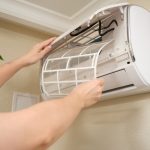
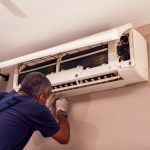
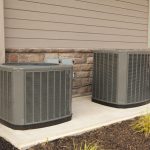
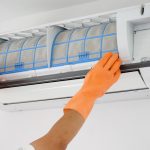
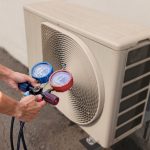


0 comments